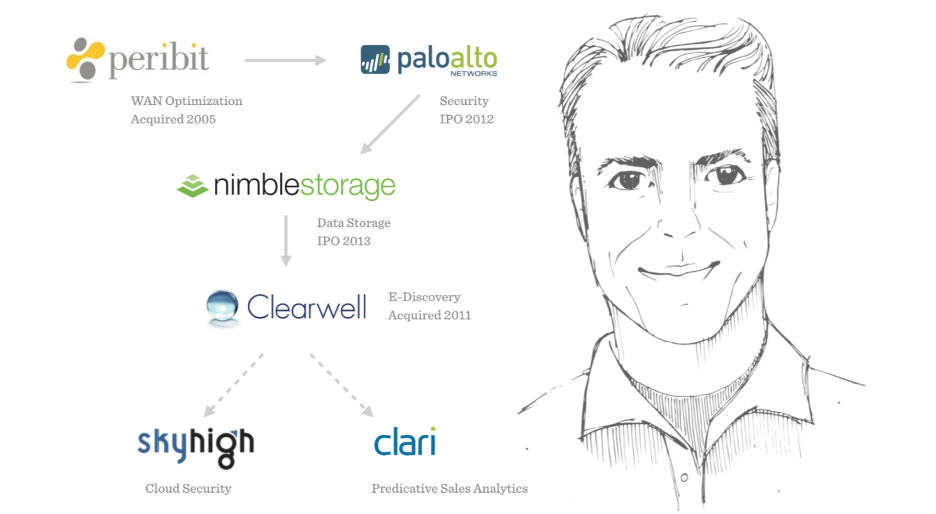The Templeton Compression and the Sales Ready Product
Don Templeton envisioned and developed the concept of a Sales Ready Product. He held early and critical roles at Peribit (acquired by Juniper), Palo Alto Networks, Nimble Storage, and Clearwell (acquired by Symantec). Peers from those companies have gone on to bring Don’s process to Clari and Skyhigh Networks, among other firms.
Don passed away in the summer of 2014.
Although Don would cringe if he knew we were calling his artisan’s approach to product market fit, Templeton Compression, I can think of no better way to honor his contribution to silicon valley than to pay it forward and to help bring his approach to the next generation of great companies.
This is dedicated to Don Templeton and his family.

The Templeton Compression
Every sales organization has a learning curve. Companies invest in sales before they have revenue to offset those costs. They move from sales breakeven to a traction point where sales people start to generate revenue greater than their costs—also known as standard quota.
As Mark Leslie explains in The Sales Learning Curve, companies should give themselves the time and money they need to climb the sales learning curve rather than ramping up sales too quickly. When companies hire the right people at every stage of the sales development timeline, integrate learnings into their product development process, and measure sales yield along the way, they improve their likelihood of success.
But what if we could actually compress the sales learning curve? What if we could shift it to the left so that sales yield turns positive earlier? A sales ready product (SRP) makes this shift occur. An SRP converts prospects in the moment—during a demo—and then shortens the sales cycle, ramps revenue quickly, and pushes a company towards market dominance.
Don believed that to engage engineers and influence their priorities, they needed to fully understand the sales process. He aligned sales, product, and engineering to create a “sales ready product” and a provocative demo that could convert prospects in the moment. Instead of showcasing lots of features, the product squarly addressed customer pain. Because the product had such incredible fit with market needs, Don’s companies could shrink the sales cycle, hence the term the Templeton Compression.
A shorter sales cycle unlocked a chain of events where higher early revenue drove increased engineering headcount, robust product innovation, and, ultimately, better terms for follow on financing.
MVP vs. SRP

A Sales Ready Product converts a prospective customer in the moment—which shortens your sales cycle, ramps your revenue, and points you towards market leadership.
An SRP requires more upfront research and development than an MVP but the results are worth the effort. An MVP may eventually validate product market fit, but only through incremental iteration against the initial idea. An SRP will chart a course towards market leadership, even if initially it takes longer to research and develop.
If you compare MVP and SRP sales curves, the MVP might launch first. An SRP takes a bit more time because it includes a longer development cycle and beta periods and extensive customer research.
However, once a company releases an SRP, customer transactions accelerate, sales cycles shorten, and renewals come more quickly, all of which fuel the growth and dominance required to establish market leadership.
Elements of an SRP
To transform your product into a Sales Ready Product, you need:
- Unified Engineering, Product Design and Sales teams
- First-hand customer research An inventory of customer objections
- An inventory of customer objections
- Understanding of what matters most to customers (and what you can ignore)
- A qualification list (and the right initial customers)
- A demo that uses data from the prospect and includes a light switch moment
- Standardized and unified sales training and materials
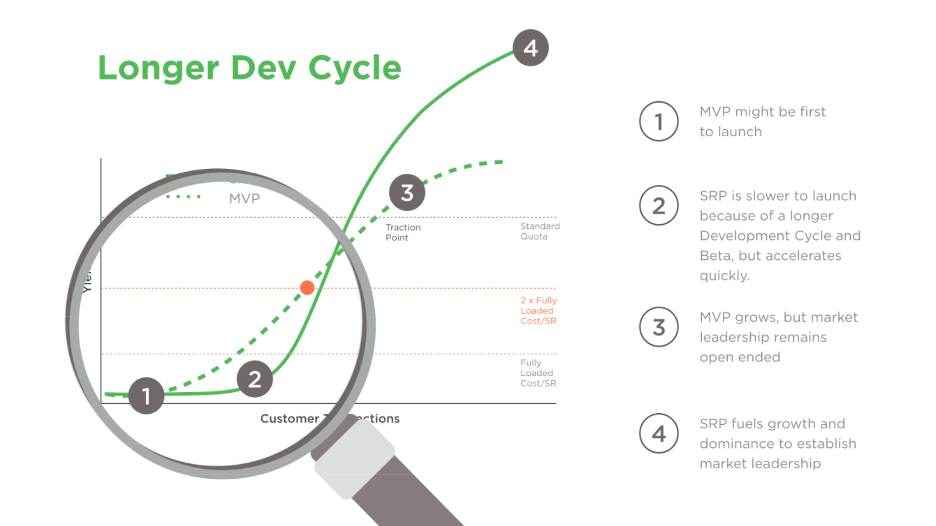
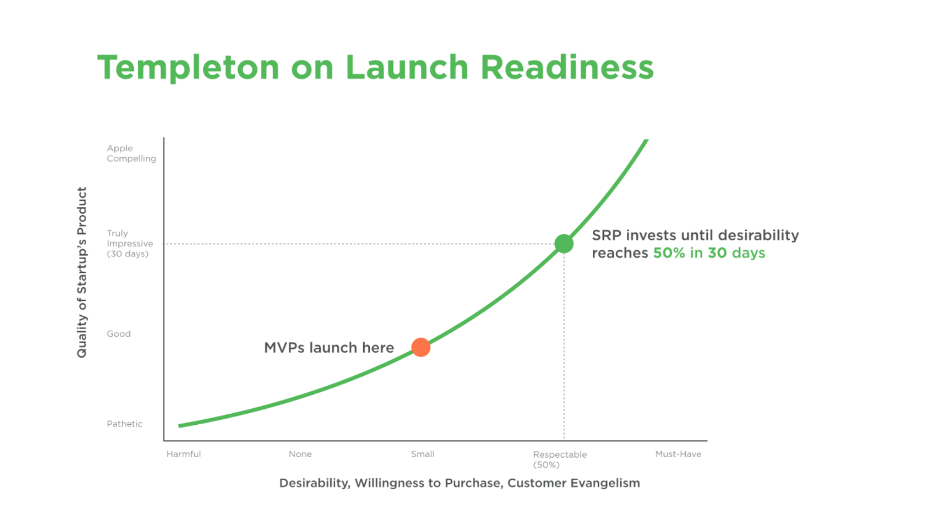
Don would continue to research and refine what the product needed to be until he was convinced that it could achieve at least a 50% close-rate in 30 days. This meant holding back from launching early, but it ensured the product was sales-ready. It also created a “velvet rope” buzz around the products he was selling. He always wanted his products to be both bought and sold—he wanted people to actually want what he was selling.
A 50% success rate for deals that can close under 30 days seems too good to be true, but Don made it happen at company after company.
Compressing the Traditional Sales Cycle
Typically, an enterprise sales team manages 10-30 accounts and holds several meetings with each account. The process takes around 180 days and has a 25% success rate.
Don’s approach reduced the traditional sales cycle to a few steps and shrunk the timeline to 30 days.
This is how he did it: Develop a Sales Ready Product with the right kind of demo and at least one very compelling use case. Qualify all leads: Don’t waste time on customers who don’t fit your ideal profile. Get the right people in the room: Decision makers and key advocates Combine the demo and proof-of-concept (POC) into one meeting. Have each sales team only manage the 3-4 accounts that squarely fit the customer profile. The close rate doubles from 25% to 50%. Iterate to improve your SRP Demo.
How to Build a Sales Ready Product
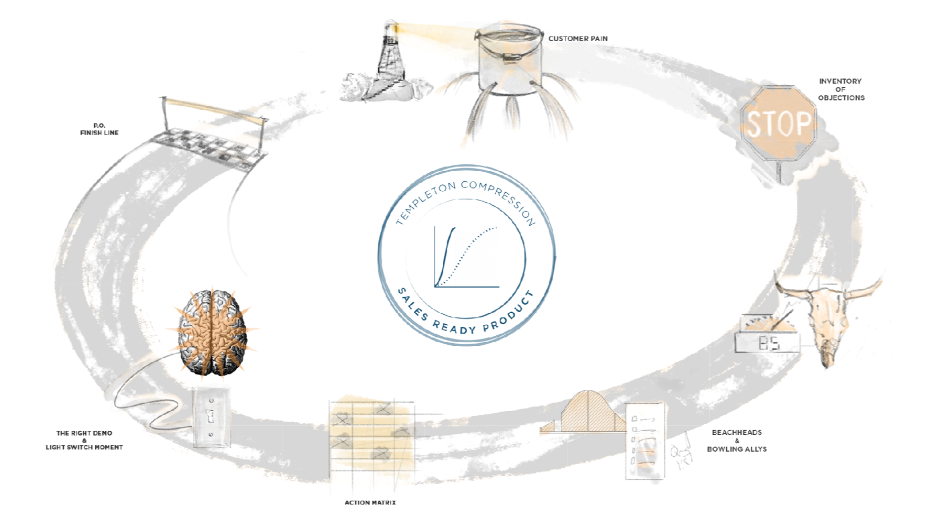
Don’s Sales Ready Product process:
Know your customer’s pain Create an inventory of customer objections Know what matters to your customers (turn on your BS detector) Establish the right beachheads and bowling pins (and alleys) Find your product super power and develop an action matrix to know what to build and what to skip 6. Build the right demo with a light switch moment Drive towards the purchase order from lighthouse customers by standardizing the sales training process and materials
1. Know Your Customer’s Pain
Months before shipping a product, meet with prospective customers to understand their pain.
By title, Don was a sales engineer. But in reality, Don was a forward scout.
He met with prospective customers to uncover what kind of solution they needed, what they thought of a product idea in development, and what would make the potential product difficult to sell, or met with open arms.
Don showed them wireframes, data sheets, and presentations in order to gather their early feedback on the product. He’d meet them for coffee, beer, or a bike ride—and get the prospective customer comfortable enough to open up about what they really needed in a product.
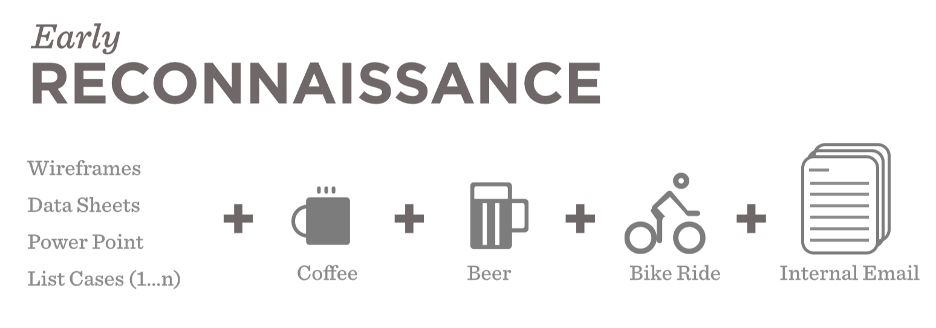
Following each scouting session, he shared his findings with the entire organization. This wasn’t a quick email; it was 2-3 typed pages of customer feedback with detailed texture on what was working and what was broken in the team’s current ideas for a product.
Today we might call what Don did Design Research or Customer Research. Either way, the process is the same: put on your elephant ears and listen to your prospective customers early and often.
- Looking for a fast read on Design Research? Try Just Enough Research by Erika Hall.
2. Create an Inventory of Objections
Along with the detailed reports from his scouting sessions, Don also created a Inventory of Objections. But here’s the trick—you don’t have to solve every objection.
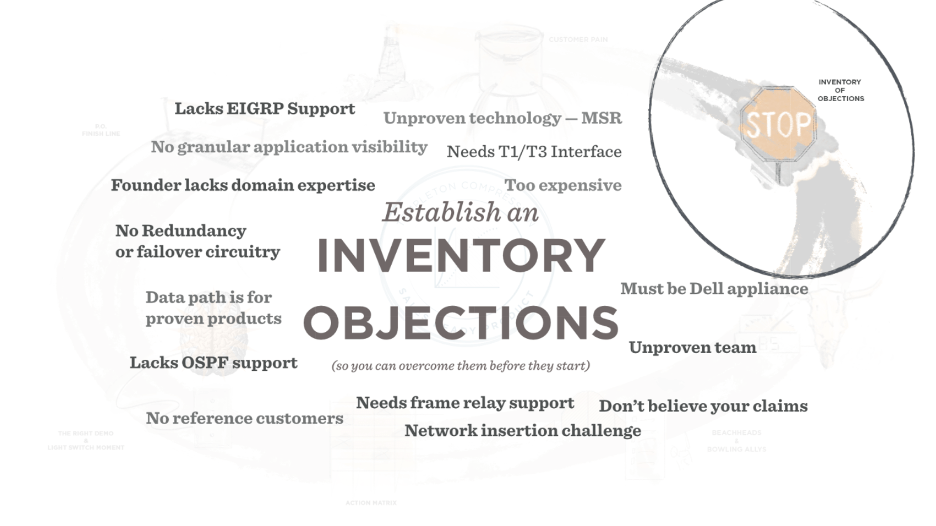
The Inventory of Objections for Peribit was enormous. Imagine trying to solve all of the problems listed above—you’d never get your beta out the door. Don knew you didn’t have to solve every objection, but you did have to uncover the few objections that really mattered.
Peribit, for instance, had originally planned to meet with a prospect and tap into their network to show how Peribit’s technology could compress the data flowing across it. But prospects pushed back on giving Peribit an in-line feed for the demo; it was just too risky to allow a vendor to disrupt their data transmission.
Don realized that this issue could kill a deal before anyone even saw how great the tech was.
So Peribit added a listening mode to the demo so that they could monitor traffic without an in-line feed.
Don’t solve everything Here’s a secret: you don’t have to solve for every objection. You just have to know which ones matter.
3. Know What Matters
Here’s where you turn on your BS detector—not every objection is valid. Don was more proud of the features he kept out of a product than the ones he helped put in.

Don wrote every objection down, but he didn’t try to solve them all. In the long list of objections that Peribit’s prospects expressed, the only ones that passed Don’s BS-detector were the following:
- No granular application visibility
- No redundancy or failover circuitry
- Data path is for proven products—i.e. no inline feed for a demo
4. Establish the Right Beachheads and Bowling Pins (and Alleys)
Your beachhead customers will be those where the product-market fit is strongest. They can get you over chasm towards mainstream adoption.
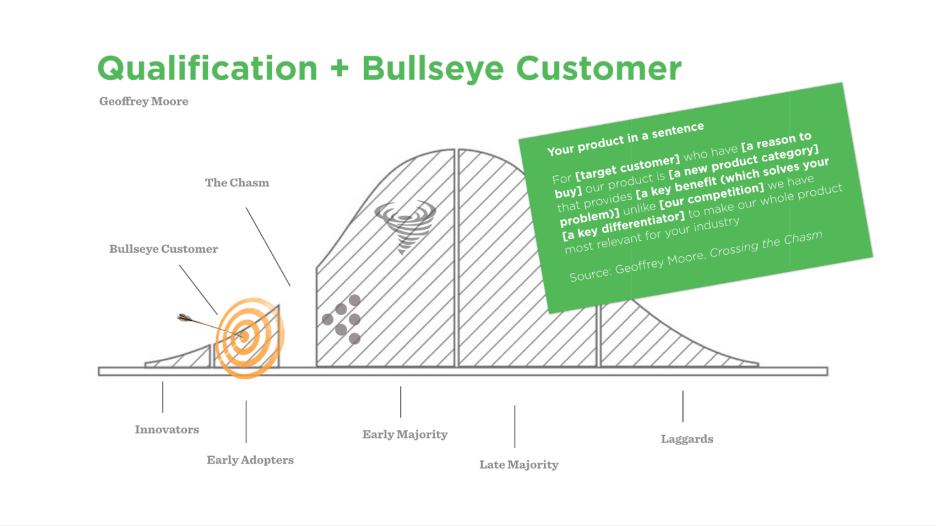
Source: Geoffrey Moore’s Crossing the Chasm
Critical to the SRP process is to know your target customer. When you have specific qualifications for your beachhead customers, you won’t waste your time chasing worthless leads.
Peribit, for instance, started out thinking their target were CFOs, but soon learned a better qualification was whether or not the prospects had a Cisco password. No password? You’re talking to the wrong person.
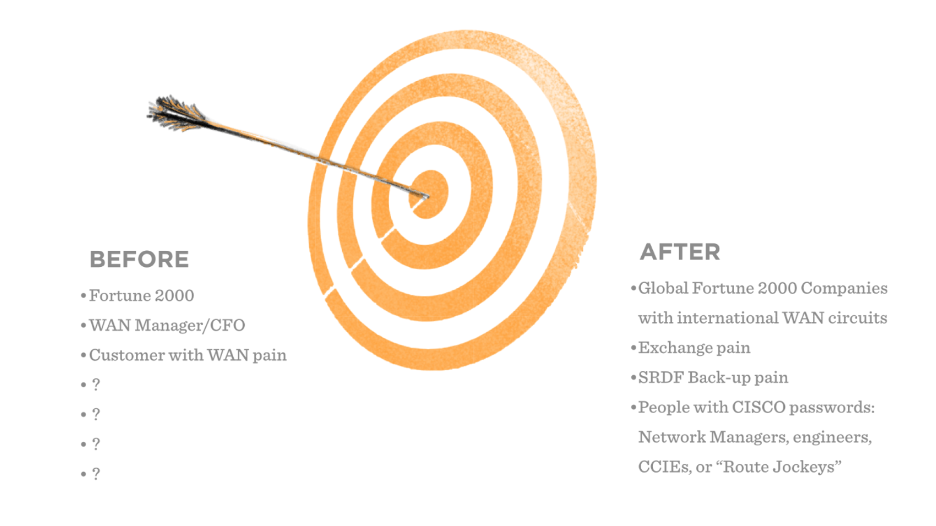
Don pushed the team to do something difficult: ignore non-strategic opportunities. Make sure everything fits your qualification criteria. If it doesn’t, move on.
5. Product Superpower and Action Matrix
The next step is to find your product superpower and draft an action matrix to know what to build and what to skip.
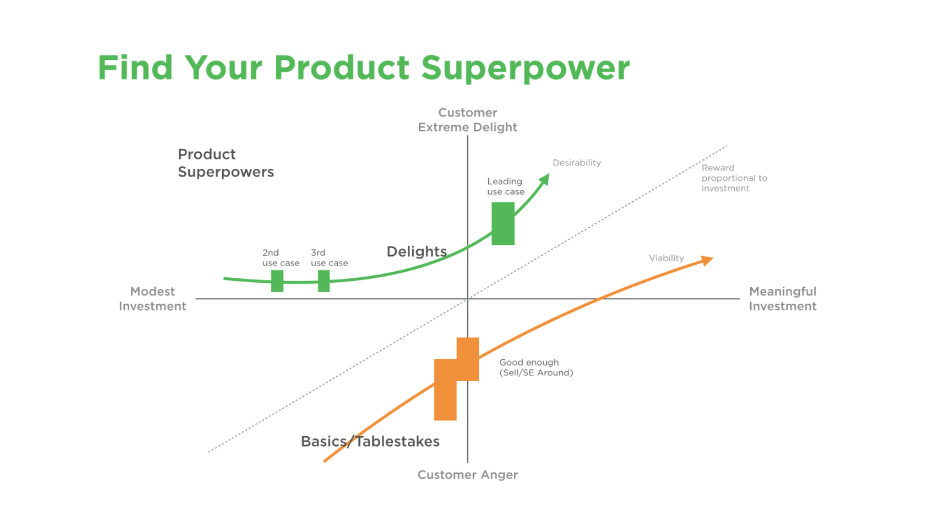
Think of this graph as a way to spend your “development calories” on different types of features. Don wanted a mix of “good enough” features with at least one leading use case that the customer would absolutely love.
As you search for your product superpower, use the Action Matrix to filter down to what matters.
TIP: Learn to build your own Action Matrix in the Story-Driven Design section. As you search for your product superpower, use the Action Matrix to filter down to what matters.
Here’s a sample Action Matrix for Clari, an SRP company deeply touched by Don’s influence.
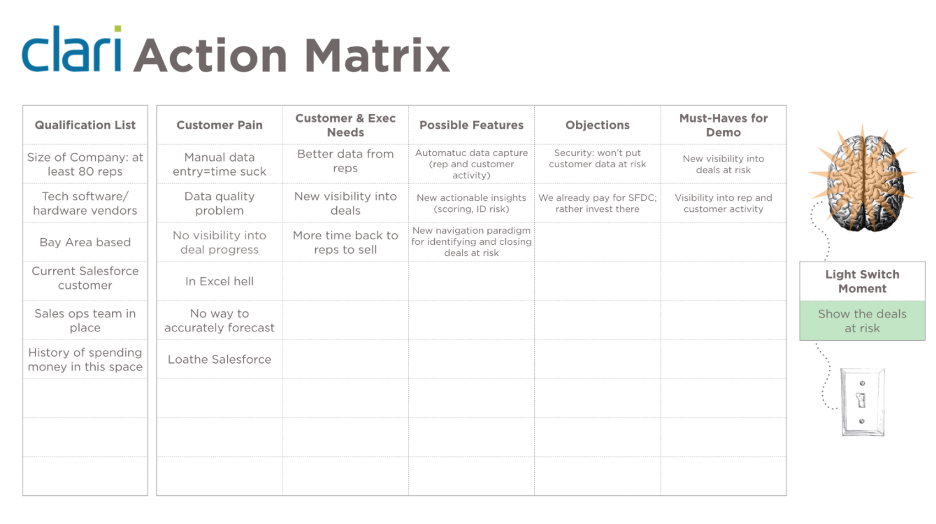
Notice how the list filters itself from left to right to end up with the one thing that matters in the demo: a light switch moment.
6. Build the Right Demo
The right Demo makes all the difference.
A Sales Ready Product demo has near instantaneous setup. It doesn’t use dummy data—it uses a customer’s real data. It instantly converts a prospect through a light switch moment. It sets the stage for a P.O. and future renewals by arming your prospect (who’s now your newly converted advocate) with everything she or he needs to rally additional corp and exec approval—including a bespoke value prop that can be shared across the C-Suite.
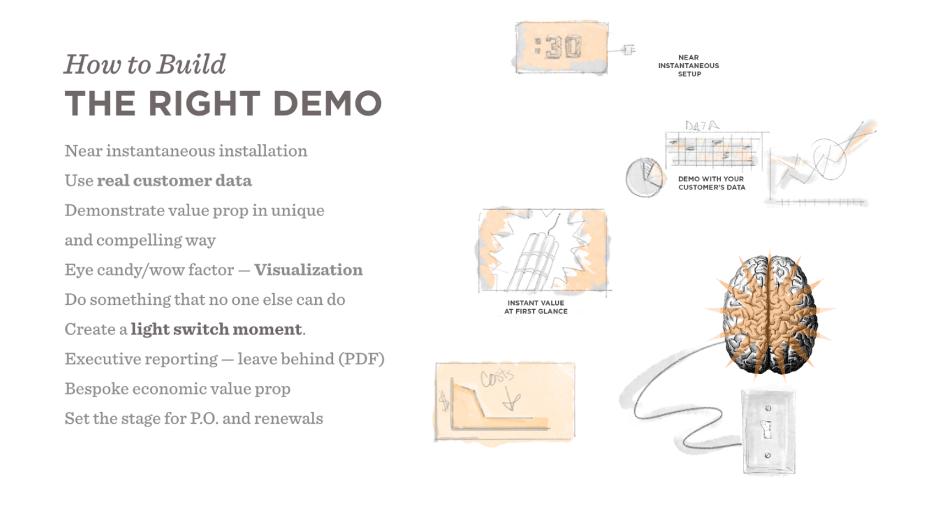
The importance of real data can’t be overstated. When prospects see their actual data processed in the moment, they go from being vaguely interested in the theoretical possibilities of your product to being instantly alert and focused on the value you provide.
Using the prospect’s actual data has an additional benefit—it greatly increases the quality of feedback you receive. Further, when a prospect knows they’ll see the actual impact your software will have on their exact situation, and it greatly increases your chances of attracting the right people in the room.

Here’s Andy Byrne from Clari on using real customer data:
Show Don’t Tell Your demo must show instant value at a glance. Visualize the value prop with a tool like D3 or Charted or Ember Charts or build your own system.
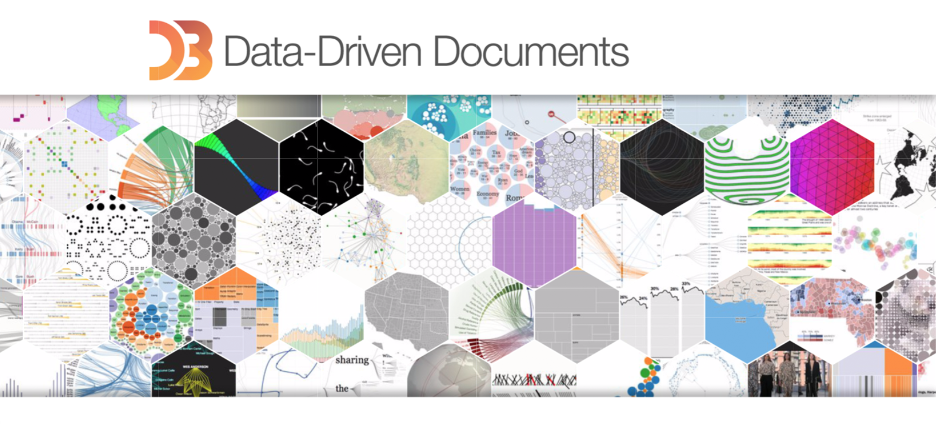

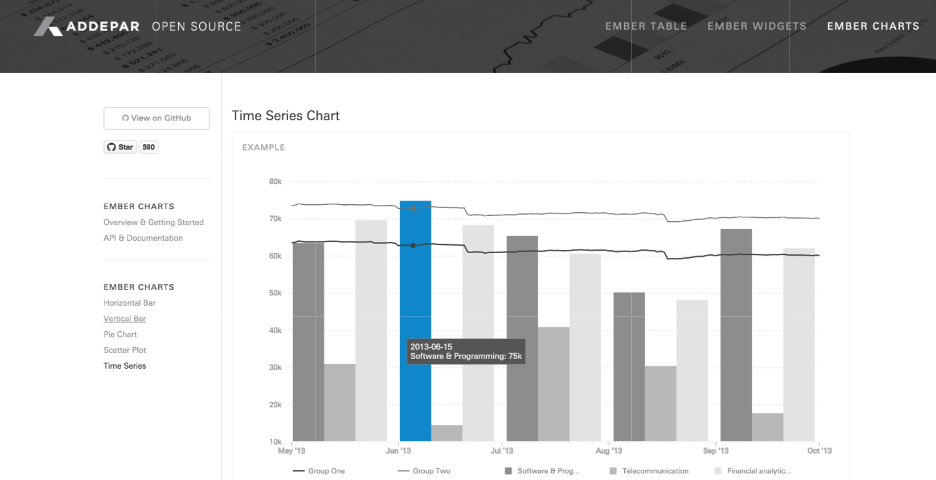
Ember Charts
Light Switch Moment Design a moment that flips a switch in the mind of the prospect that converts them into an advocate and customer.
We call this a “light switch moment” — when a prospect sees something compelling in the demo and says, “I need this product.”
Bespoke Economic Value Prop Arm your supporter’s cause as she or he advocates for your P.O. to get signed by solving for the needs of the C-Suite.
In Peribit’s case, prospects needed to immediately understand the value of Peribit’s compression technology. Peribit showed them specific report on WAN bandwidth, transmission speeds and latency and a bespoke economic value prop.
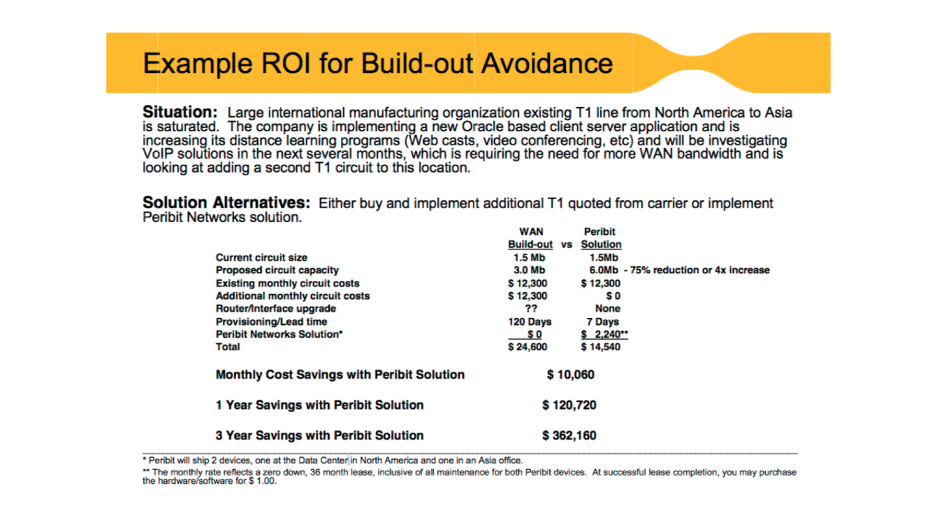
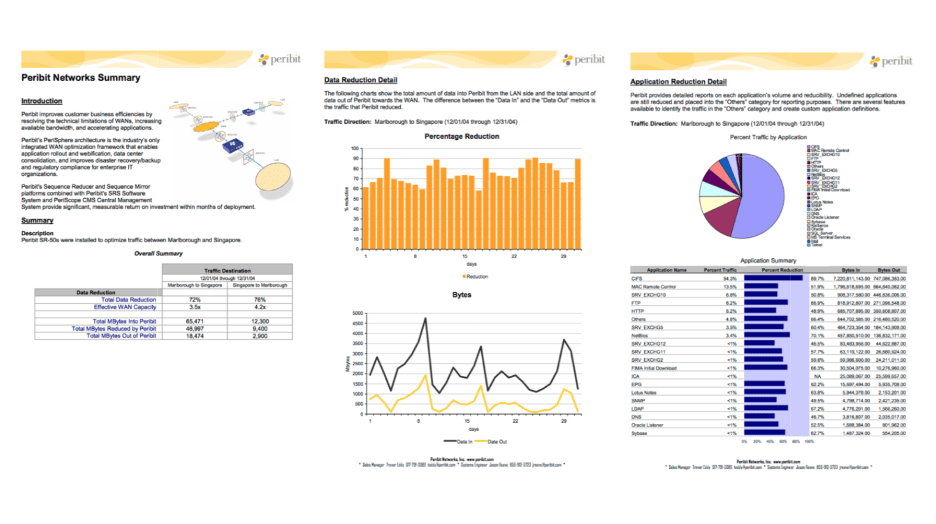
7. Driving Towards Lighthouse Customers
Standardize and certify your sales team, process and materials.
Once Don and the sales team had developed the demo, the next step was to make it easy for anyone to sell the product.

Don and his team created a library of documents—proof of concept reports, sales presentations, product documents, and sales process presentations—that any rep could use.
Rather than depend on reps to put together their own material and take time away from selling, Peribit provided all of this information in a ready-to-use format. Everyone could work from a clean sales deck or grab a report template and access all the latest materials.
His teams certified every sales rep at every stage. Training was organized and standardized; every sales rep went through the same process and had access to the same materials. As a result, Peribit put a unified expression of the value prop out in the market.
|Build a Sales Enablement System| One way to organize, manage and unify your sales materials is to is to use a cloud-publishing solution for sales enablement. If something changes, you simply republish. No more out of date decks!
8. Don’s Influence
Don touched many companies in his career. He brought the concept of a Sales Ready Product from Peribit to Palo Alto Networks and Nimble Storage. His partners from Clearwell eventually served as founding team members of Sequoia startups Skyhigh Networks and Clari—two companies built on the foundation of a Sales Ready Product.
